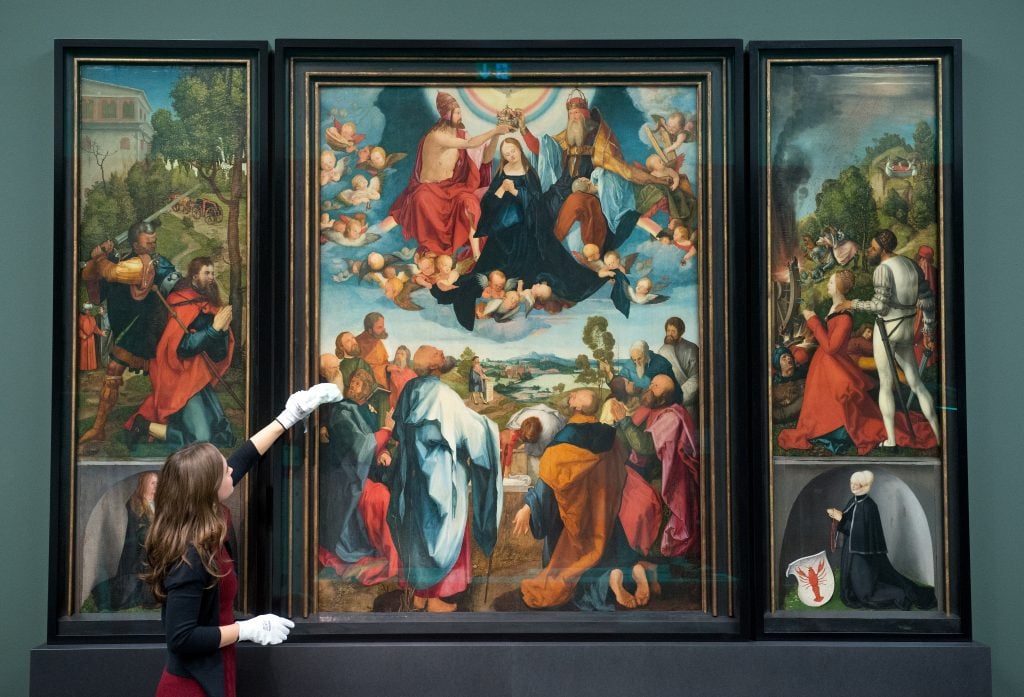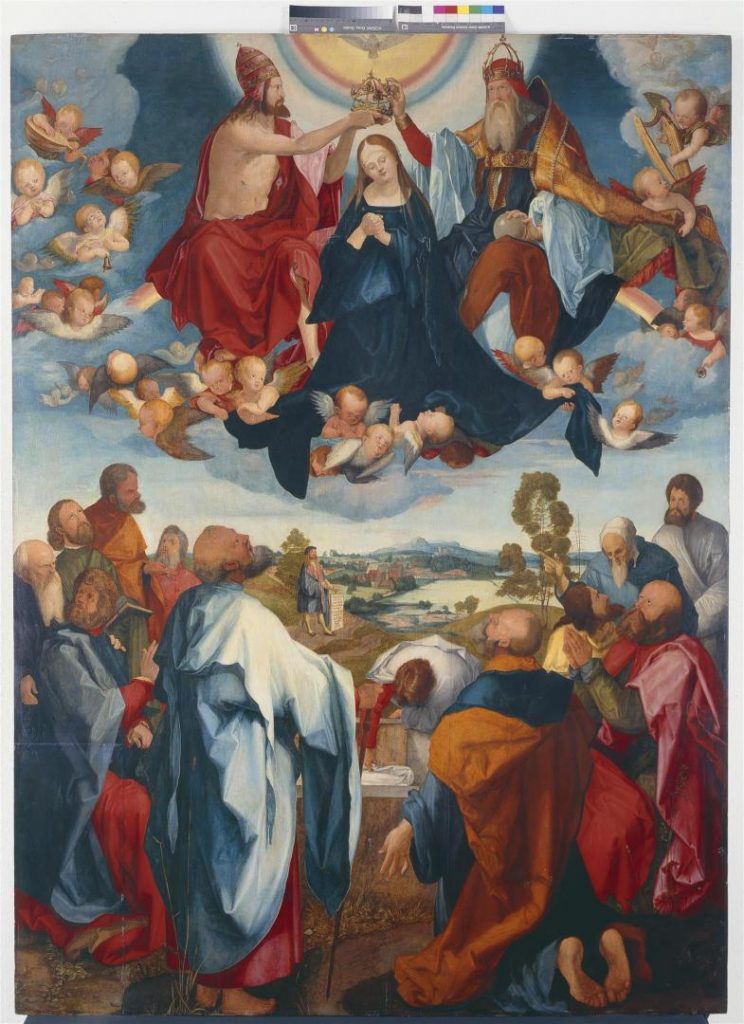Art History
Albrecht Dürer Painted Himself Into a 16th-Century Altarpiece to Spite a Patron Who Paid Him Poorly, New Research Suggests
"I am losing time and money and earning your ingratitude,” the German painter wrote his patron.

"I am losing time and money and earning your ingratitude,” the German painter wrote his patron.

Adam Schrader

Albrecht Dürer, considered the most influential artist of the Northern Renaissance, painted himself in the middle of a 16th-century altarpiece out of spite for his patron and to protest for better pay, new research suggests.
Dürer’s self-portrait in the work, known as the Heller Altar after its patron Jakob Heller, was previously known. But for her upcoming book, Dürer’s Lost Masterpiece: Art and Society at the Dawn of a Global World, Ulinka Rublack, a professor of early modern European history at Cambridge University, researched letters between Dürer and Heller, a wealthy German politician and merchant, finding that the artist might have made the self-portrait as a form of revenge.
The artist was initially meant to receive 130 florins to paint the central panel of an altarpiece for a Dominican church in Frankfurt commissioned in 1507 by Heller. Dürer went back and forth with his patron in at least nine letters seeking better pay.
“What I agreed to was to paint for you something that not many men can,” Dürer wrote in a letter to Heller in November 1508. “It will be valued at 300 florins if not more. I wouldn’t take three times the money promised to paint another one like it. For I am losing time and money and earning your ingratitude.”
Rublack told Artnet News that Dürer “didn’t really need the money by that point” as he had no dependents, “but money really mattered to him because he was trying to assert the dignity of artists.”
In the painting, Dürer is seen just below Mary and Jesus during her ascension and coronation. He is seen holding a shop sign that identifies him as the painter of the work.

Dürer painted himself in the middle distance of the altarpiece, with a sign identifying himself as the artist of the work. Photo: Horst Ziegenfusz/Historical Museum Frankfurt
“Dürer had included a small image of himself in another altar painting in Venice, but without saying, ‘it is me, Dürer’ for posterity,” Rublack said. “It’s essentially him saying, ‘this is not actually about you as a patron, Mr. Heller. This is art and this will endure and will be looked at in 500 years’ time.’”
According to Rublack, the most ambitious painting an artist could make at that time was an altarpiece because they were complex compositions thought to be spiritually healing. An artist could work on one for a long time and get paid well.
“He’s so furious about not getting paid for what he thinks is fair that he then gives up altar painting,” Rublack said of Dürer.
In fact, Dürer made just one more altarpiece in his lifetime. The Heller Altar itself was removed from the church in 1614 and destroyed in a fire in Munich in 1729. It lives on as an early 17th-century copy by Nuremberg painter, Jobst Harrich, now held by the Frankfurt Historical Museum.
Despite all this, Rublack wrote that Dürer was not “vengeful” and still enjoyed successfully producing a challenging piece.
“Dürer´s ‘selfies’ might appear arrogant or even just a marketing ploy today,” Rublack wrote in the book.
“Yet, as we have seen, Dürer never painted a large self-portrait after 1500, and stopped doing altarpieces in 1511. His self-portrait on the Heller altarpiece hence could be seen as signaling a man who largely worked independently and who wanted to be recognized and remembered for his art.”
More Trending Stories:
Price Check! Here’s What Sold—and For How Much—at Frieze Seoul 2023